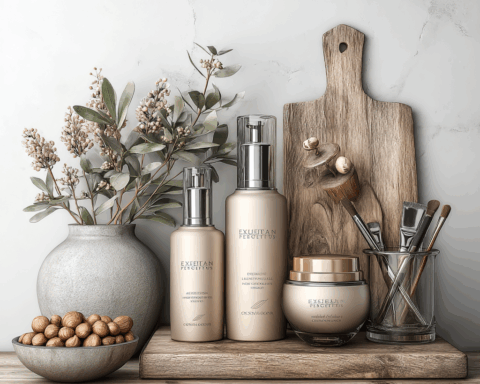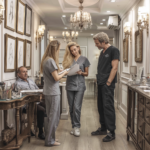Comparison of Postoperative Complications: Why the Closed Technique Reduces Risks
Plastic surgery isn’t just a medical procedure; it’s a true art form where every detail matters. This is especially true for rhinoplasty—an operation that can change not just the appearance but also the life of the patient. One important question that many people grapple with is choosing between the open and closed methods for this surgery. This choice affects not only aesthetic aspects but also the overall safety and comfort during recovery. Let’s delve deeper into the analysis of infection statistics and sensitivity issues, as well as the advantages of preserving the integrity of the skin.
Complications After Rhinoplasty: An Overview
Rhinoplasty is one of the most popular procedures in plastic surgery and carries a range of risks. The main complications following rhinoplasty can be divided into several categories: infectious, sensitivity disturbances, circulation issues, breathing problems, and aesthetic defects. Each of these aspects requires special attention, as they can significantly impact not only the appearance but also the overall health of the patient.
Minimizing damage to the skin’s integrity is a key factor in preventing most postoperative complications. This consideration becomes paramount when choosing a rhinoplasty method that is less traumatic and safer for the patient.
Open Rhinoplasty: Characteristic Complications
Let’s look at the open method of rhinoplasty, which involves an incision on the columella (the tissue that separates the nostrils) and the detachment of a skin flap. This approach gives the surgeon complete visual access to the structures of the nose, which is an advantage but also increases surgical trauma.
The main complications associated with open rhinoplasty include:
- A significant increase in the risk of infectious complications, due to the possibility of contamination from the external environment;
- Loss of sensitivity in the tip of the nose as a result of nerve damage during the surgery, which can become a temporary or permanent issue;
- A longer recovery period, attributed to tissue trauma;
- The likelihood of developing external scars on the columella, which can be a cosmetic concern;
- A higher frequency of inflammatory complications, especially if proper wound care instructions are not followed.
Statistics show that infectious complications can occur in 1-2% of patients, while sensitivity disturbances can reach up to 40%. Thus, the choice of method becomes critically important.
Closed Rhinoplasty: Advantages of Preserving the Skin Barrier
Now let’s turn to closed rhinoplasty, which is performed without external incisions. This means the surgeon accesses all necessary structures through internal incisions within the nasal cavity. As a result, the skin remains largely untouched.
The advantages of the closed method include:
- Preserving the skin barrier, which significantly reduces the risk of infection, as internal incisions do not contact the external environment;
- Minimal nerve and tissue damage, which helps avoid loss of sensation and decreases the likelihood of prolonged swelling and hematomas (blood collections);
- A shorter rehabilitation period due to less invasive intervention;
- The absence of external scars, offering a significant cosmetic benefit.
Statistical data indicates that the infection rate after closed rhinoplasty ranges from 0.1% to 0.3%, which is 8 to 10 times lower than with the open method.
Comparison of Complications: Statistics and Practical Aspects
For clarity, let’s look at a comparative table:
| Complications | Open Rhinoplasty | Closed Rhinoplasty |
|---|---|---|
| Damage to skin integrity | Yes | No |
| Infectious complications | 1–2% | 0.1–0.3% |
| Sensitivity disturbances | Up to 40% (often temporary) | 5–10% (transient) |
| Risk of external scars | Yes | No |
| Duration of rehabilitation | 2–3 weeks or more | 1–2 weeks |
| Frequency of significant swelling/hematomas | Higher | Lower |
This comparison clearly demonstrates that closed rhinoplasty generally has clear advantages over the open method, especially regarding the reduction of postoperative complications.
Why Preserving Skin Integrity is a Key Factor in Reducing Risks
The skin is not just a protective barrier; it is a complex system that prevents infections. When it is damaged, especially on the face, the risk of complications significantly increases. Furthermore, sensitive nerves run in the area of the incision, and cutting these can lead to unacceptable consequences. Minimal skin damage, which may seem insignificant, can adversely affect the patient's condition, creating additional problems.
Psychological and Cosmetic Consequences of Complications
It’s important to remember that plastic surgery is not only about physical transformation but also involves a powerful psychological aspect. Complications such as infections, external scars, or prolonged loss of sensitivity can undermine a patient’s self-confidence and lead to disappointment. The closed method, by minimizing risks and speeding up recovery, significantly improves the mental well-being of patients.
When is the Open Method Justified?
However, the open method of rhinoplasty should not be overlooked. It may be warranted in complex cases, such as severe deformities or post-traumatic defects, where wide access is necessary for reconstruction. These situations demand a high level of surgical skill and specialized expertise.
Professional Perspective: Author’s Commentary
The quality of plastic surgery depends on many factors, including the choice of method and the surgeon's level of expertise. Personally, I have observed that patients who undergo closed rhinoplasty tend to return to their normal lives more quickly and encounter fewer postoperative problems. However, the outcome of all surgeries depends not only on the technique but also on proper postoperative care and the attentiveness of the patient themselves.
Practical Recommendations for Future Patients
Do not hesitate to discuss the specific risks of both methods with your surgeon; an experienced specialist will always be able to explain why one approach is chosen over another. Take postoperative care seriously, as even with a closed approach, mistakes during recovery can lead to consequences. Don’t chase after low prices—select a surgeon with a good reputation and experience with both techniques.
Conclusion
Closed rhinoplasty is currently the preferred option for most patients looking for a safe, quick, and aesthetically pleasing result while minimizing postoperative complications. Preserving the integrity of the skin greatly reduces both the risk of infections and the likelihood of sensitivity issues. Health and beauty are inseparable concepts, so choose your methods and specialists wisely.
Do you want to keep up to date with the latest news about plastic surgery? Subscribe to my Telegram channel: https://t.me/By_Staisupov_ENG
Do you like to watch videos? More useful information is available here (the channel is in Russian, but you can always turn on auto-titles): https://www.youtube.com/@staisupov
All the results of plastic surgery can be found here: https://staisupov.com/results







